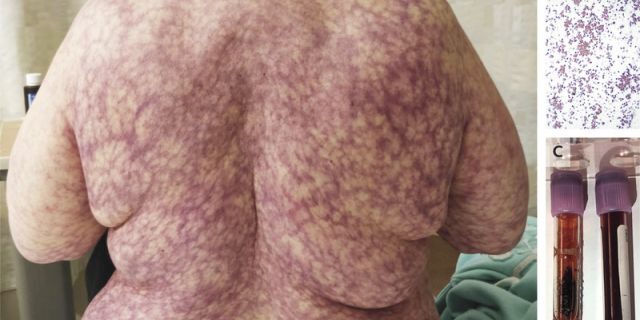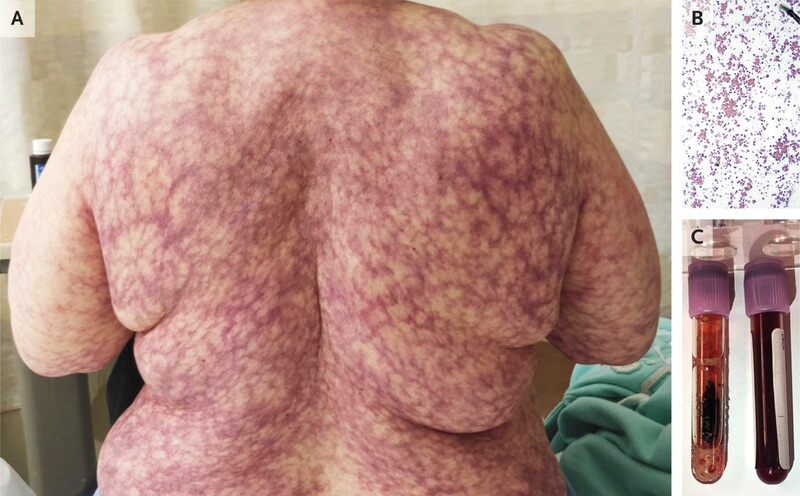[ad_1]
When it comes to treating patients with unusual medical conditions, physicians are seemingly never at a loss.
Take, for instance, a doctor in Rhode Island who recently detailed a time he helped a woman whose blood turned a black-brown color after she used too much over-the-counter toothache medication. In another recent case, doctors recalled a time they treated an Israeli woman for so-called “broken heart syndrome” after she ate a large amount of wasabi, assuming it was an avocado dip.
DOCTORS PERFORMING KIDNEY TRANSPLANT ON GIRL, 9, DISCOVER SHOCKING ABNORMALITY IN DONATED ORGAN
But in a newly reported peculiarity, New York physicians recalled when a 70-year-old woman came to them with a purple, spiderweb-like rash all over her body. The woman’s case was published Thursday in the New England Journal of Medicine (NEJM).
Dr. Konika Sharma and Dr. Anush Patel with the Bassett Medical Center in Cooperstown, N.Y., treated the woman, who arrived at their clinic complaining of dizziness and rashes. Two weeks prior she had suffered a viral respiratory tract infection, they wrote.
The doctors said the woman’s rash was “consistent with livedo reticularis” — a condition that causes skin, typically on the legs, to look blotchy and purple. The Mayo Clinic states livedo reticularis occurs “due to spasms of the blood vessels or an abnormality of the circulation near the skin surface.” Cold weather can trigger the condition; Sharma and Patel noted that temperatures were below freezing when the woman sought their help.
“I have seen livedo reticularis before, but nothing this extensive,” Dr. Sharma told Fox News, noting the woman’s case was “extreme” and “very rare.”

The 70-year-old woman was later diagnosed with cold agglutinin disease.
(The New England Journal of Medicine ©2019.)
After drawing her blood, doctors noticed it clumped (scientifically referred to as agglutination) inside of the vial, a sign of a blood disorder known as cold agglutinin disease. The Genetic and Rare Diseases Information Center defines the condition as a “rare type of autoimmune hemolytic anemia in which the body’s immune system mistakenly attacks and destroys its own red blood cells.”
Doctors warmed the blood in a saline bath, and it returned to a normal texture. They subsequently diagnosed the woman with cold agglutinin disease, which can occur for unknown reasons but is sometimes associated with other conditions, such as certain bacterial and viral infections, or certain cancers and autoimmune diseases.
As for the woman, her case of cold agglutinin disease “may have been exacerbated by [the] recent viral infection along with the cold weather in upstate New York, where the temperature was 15 degrees F (−9 degrees C) at the time of her presentation,” they wrote.
The patient wasn’t previously aware she had the condition, Dr. Sharma said.
MAN’S FOOT SEVERED IN HORRIFIC MOTORCYCLE CRASH REATTACHED DURING 7-HOUR SURGERY
The woman was then treated with blood transfusions and rituximab — a type of medication — for a week. She improved, telling the doctors she felt less dizzy, which itself is also a symptom of cold agglutinin disease. But, they noted, “the rash persisted.”
By the summer, however, Dr. Sharma said the woman’s rash was much improved and “faint” in color.
[ad_2]
Source link

